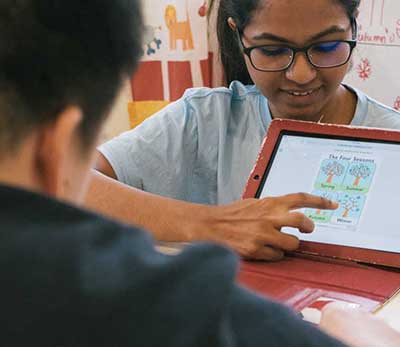
The Difference Between Communication and Speech
Do we see
communication and speech as the same? Well, while both speech and
communication are necessary skills, both words have different meanings.
So, how is
both communication and speech different from one another?
According
to the creator of the Picture Exchange Communication System (Frost and
Bondy, 2002), communication is any behaviour exchanged with another person that
produces related or direct social rewards. For example:

Speech, on the other hand, is the expression of communication and thoughts
through spoken language (Merriam Webster Dictionary). Spoken language however is challenging for
some children with autism. For some, they may have only little of this, for
others they may not have speech at all. How then do we help these children?


In the examples above, we note different ways that
children can engage in speech to communicate that are not necessarily reliant
on spoken verbal speech. These include using sign language, using pictures or
even using a communicative device in lieu of spoken verbal speech.
Now that we understand how communication and speech are
different, let’s see how both skills are vital for a child with autism. One of
the core areas that will need to be addressed with children with autism is
teaching them the power of communicating (communication) using a tool that is
appropriate.
Many of us have learnt from a young age that when we
communicate, there are positive outcomes. For example, as a baby, when we cry,
mummy comes to comfort us. Then as a toddler, when we point to a set of trains, we
get the trains in return. Then as a child, when we ask for help, our parents assist in return. Then as we grow older, we communicate for a variety of
reasons beyond requesting to include commenting on others, describing our
experiences, sharing our feelings and contributing our ideas.
In all the examples above, these children have engaged
in the act of communication. The tool in
which they communicated was initially pre-intentional as a baby then more
intentional as they grew older. To put it simply, as a baby we pre-intentionally
communicate by crying. This behaviour is not directed at another person. It
requires the people in our environment to interpret what we are communicating.
Then, we learn the power of gestures (for example, pointing) and words. This results in intentional
directed communication. This behaviour is directed at another person.
For chidren on the autism spectrum, this understanding
that communication produces positive outcomes may be absent or may not be at
par to what we expect of their age. We could observe this in a 4-year-old
engaging in pre-intentional communciation like crying to ask for a snack. What about a 7-year-old who has speech but bites his hand when he is
angry? We could also observe this in a 17-year-old jumping and hand-flapping because he is excited about receiving a new phone.
Thus, teaching communication to children on the autism
spectrum is vital. The misconception is that this communication
has to be spoken verbal speech. This, however, as aforementioned can be challenging for some children on the autism
spectrum. Under the circumstance, to eliminate other tools of communicating would
result in increased frustration. Thus, the need to teach other tools to
communicate is equally as vital. From our earlier example, children on the
autism specturm who do find spoken verbal speech very challenging can be taught
to use sign language, pictures or to write.
The tool to communicate that we teach to these children
should be functional. Thus, in communities where sign langauge may not be
understood, pictures may be a more appropriate option. Similarly, in a community
where the primary lanaguge is Mandarin, teaching communciation in English may
be less functional.
Imagine a world where we have lost our voices, we are
in a foreign country that speaks a foreign language. The helplessness that we
would feel when we go about our day-to-day life can be highly frustrating. Imagine
if this is the world we wake up to every day.
For many children on the autism spectrum where both
communication and speech is delayed, this is their reality. Teaching
communciation and speech becomes vital so that these children understand that
appropriate and functional communication is rewarding.
To conclude, here are 3 simple questions to ask yourself when targeting
communication and speech:
- Identify what is the child trying
to communicate? - How is the child communicating
this? is it functional? - What would be a more functional
way to communicate this? Remember this may not always be spoken verbal speech
but may be in form of sign language, picture, using a communciate device or
using appropriate gesture.
Reference List
- Frost, L. & Bondy, A. (2002). The Picture Exchange Communication System. Pyramid Education Products, Australia.